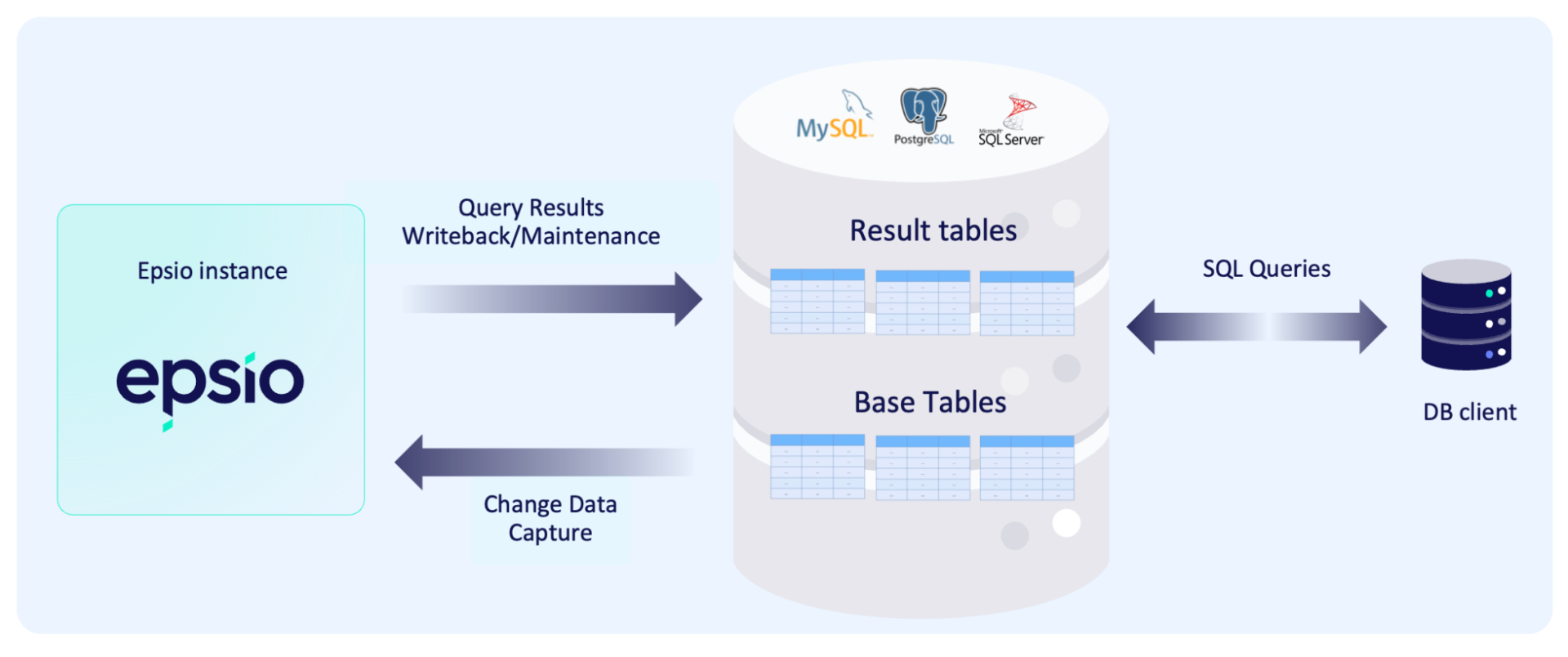Overview - Epsio¶
Epsio is a streaming SQL engine that integrates with existing databases (Postgres/MySQL/MSSQL) and constantly updates results for queries you define whenever the underlying data changes, without ever re-calculating the entire dataset.
By incrementally updating the results of complex queries, Epsio enables you to significantly reduce query times and costs for complex queries, helping you build fast, efficient real-time analytics and applications.
Epsio supports most SQL syntax, including most types of JOINs, CTEs, subqueries, GROUP BY, window functions and more.
How does Epsio work?¶
As an example, imagine a database table that contains the salaries of all employees within a company, and a complex query that calculates the sum of salaries by department:

As new data arrives or existing data is updated, the answer needs to change accordingly. While traditional databases need to rerun the entire query to do this, Epsio will only perform the minimum calculations needed - in this case, adding or subtracting the new salary from the relevant department:

As the above calculation is very efficient (compared to recalculating the entire query), this results in massively reduced query times, significant cost savings, and a highly scalable architecture.
How does Epsio integrate with my existing databases?¶
Epsio is deployed within your existing environment on a separate compute instance from the database. For each defined query, Epsio first fetches a snapshot of the initial data from the relevant underlying tables in your database and writes back the calculated query result to your original database.
Then, whenever the underlying data changes, Epsio uses change data capture to receive the new changes and incrementally update the previously written query result.

Usage¶
To configure Epsio to incrementally maintain the results of a heavy query, call the create_view function with the name and query parameters (note that all work with Epsio is done calling functions/selecting data from your existing integrated databases).
postgres=# CALL epsio.create_view('epsio_view',
'SELECT SUM(SALARY), d.name FROM employee_salaries e
JOIN deplartments d on e.department_id = d.id
GROUP BY d.name');
NOTICE: View created successfully
CALL
To retrieve the results, query the newly created Epsio view.
postgres=# SELECT * FROM epsio_view;
sum | name
-------------+-------------
76348540000 | Engineering
14689640000 | Marketing
64478860000 | Sales
(3 rows)
Time: 7.598 ms